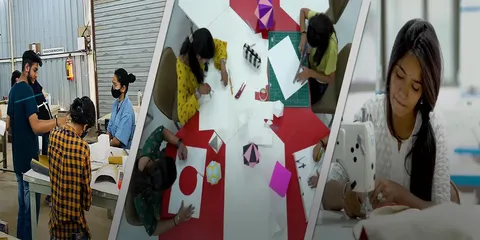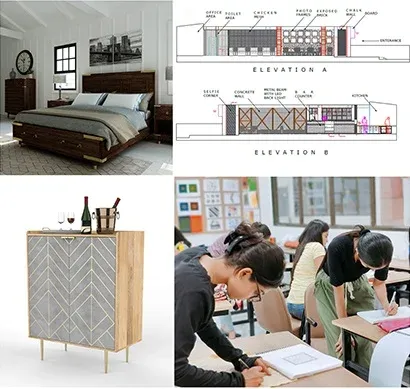
Interior & Furniture Design
Interior Designing is the art and science of playing with the available space to create the right mix of purpose, mood, and aesthetics. Designing the space revolves around the client. Therefore, understanding the needs, values, aesthetics, cultural background, and environmental conditions of the client is of paramount importance to create their perfect living space. Creating that perfect space with a sense of belongingness for the clients comes to be the core responsibility of any Interior Designer.
Our Interior & Furniture Design syllabus is a detailed course structure where students learn different textures and materials. They are further exposed to technical aspects like structural study, colour theory, human psychology, anthropology, lighting, etc. followed by exploration of space, shapes, colours, and textures. We encourage students to let their creativity flow while keeping the client’s aesthetic values, comfort, needs, lifestyle, cultural values, and economic conditions as their priority. After all, creating the right working/living space which is going to be a part of one’s life for the longest time is no less than creating magic!
This course lets you create dynamic and thought-provoking interior environments. Students develop practical skills so you can create imaginative spaces that meet their needs and enrich the experience of modern life. Students also build their technical knowledge to help their practice professionally. Students get to work in purpose-built design studios and have access to a dedicated art and design library. They also get benefit from links with design studios, cultural institutions, entrepreneurs, and community groups. They often set projects for students, awarding placements or prizes to the best

HIGHLIGHTS
- Ergonomics
- History of Art & Craft and Architecture
- Visualization and Drawing
- Material Exploration
- Craft Techniques
- Digital Representation Technique
- Industrial Design
- Exhibition Space Design
- Personal and Public Space Design
- Industry Internship
- Graduation Project
Curriculum 22-23
BOS - B.Des.
Course Structure
BACK